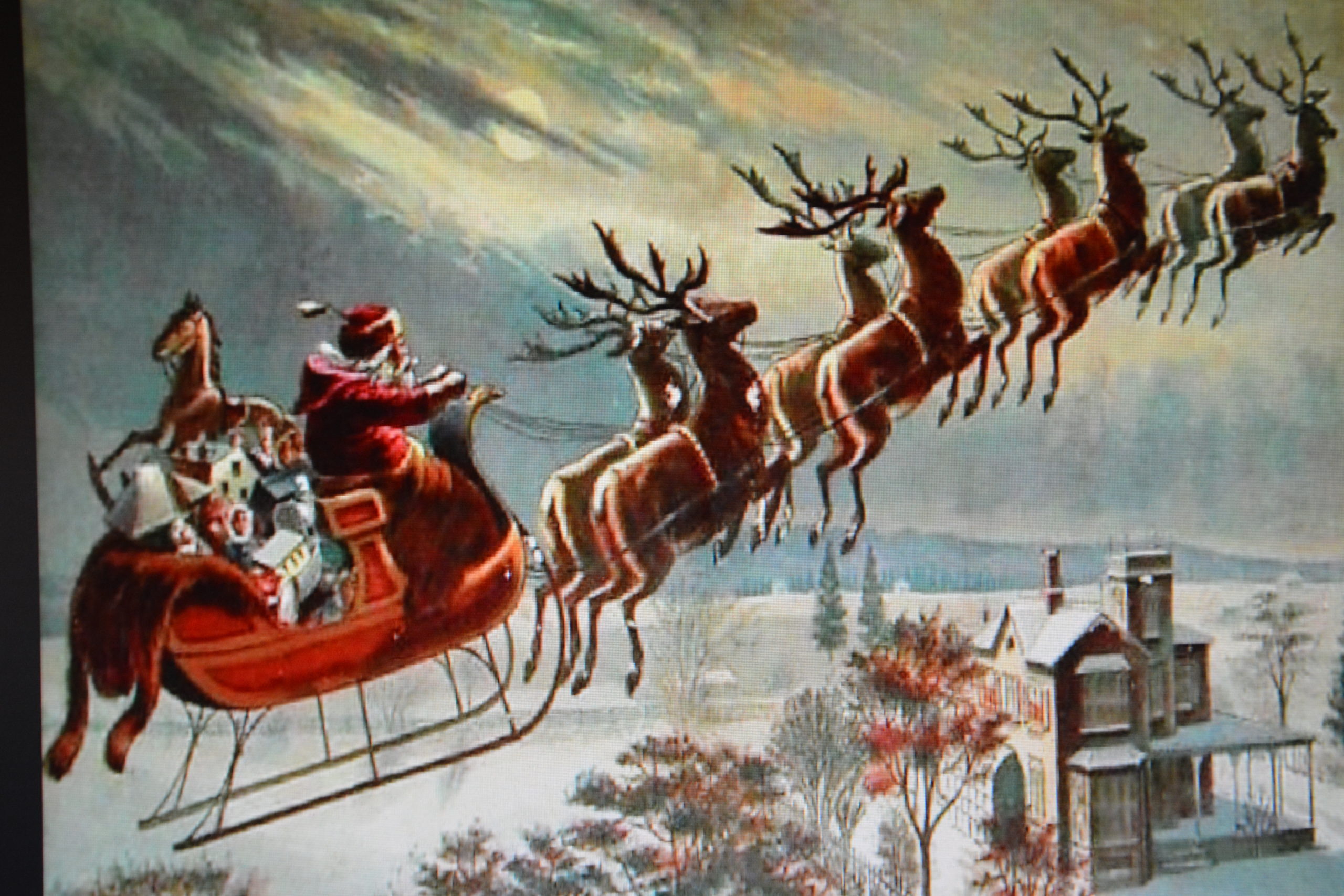Christmas has a way of reminding us of what we want and what we lack. This yearning is couched in things like presents, Christmas trees, holiday cards and family gatherings. It’s all commercialized yet nonetheless, underneath the ads and the credit card purchases and the mania, there exists a hope for a transformation.
“A Christmas Carol” by Charles Dickens was written because he felt that 19th century England had lost its sense of social harmony. His novel has been embraced because it offers the hope that like Ebeneezer Scrooge, we will transform from darkness to light and gain happiness.
Buying presents, setting up the Christmas tree and such rituals are what psychoanalysts call transformational objects, but it seems that the transformation becomes another forgotten moment, dropping out of sight faster than dried evergreen needles.
Classic Christmas songs, from Bing Crosby’s “I’m Dreaming of a White Xmas” to Nat King Cole’s “The Christmas Song” do their best to help us in our quest to find holiness, joy and peace and as we shop all these jingles enter our unconscious and attempt to instill some magic.
In keeping with the season, The Wall Street Journal recently had a piece on sainthood and miracles. They explored the nature of saints and what it took to get canonized. Each saint has a back story; each experienced a strong dream, and then had the courage to hold fast to their dream which produced miracles.
The story of St. Patrick, St. Francis of Assisi, St. Valentine, St. Christopher, St. Catherine, St. Padre Pio and Joan of Arc are all filled with serious pain. St. Patrick was enslaved during childhood, St. Francis of Assisi was imprisoned for more than a year, St. Valentine was beheaded for his work, St. Catherine was first tortured and then beheaded, and Joan of Arc was burned at the stake. The life of a saint isn’t easy. They suffered, experienced stigmata, held to their vision, performed miracles and were killed for it.
Each saint had a transformative dream while held captive. While a slave, St. Patrick and St. Francis of Assisi experienced visions from God which led them into a holy life. Joan of Arc had a vision as a teen to lead an army for France during the Hundred Years War between France and England. All these visions captivated these saints and guided them on their quest.
The Wall Street Journal article mentioned that the final element to canonized sainthood involves miracles, an interesting concept since we live in an age that is hungry for miracles. Paul Simon wistfully sang “These are the days of miracles and wonder.”
I watched the 1996 film “Michael” starring John Travolta as an angel on his last lap around Earth. I was hoping to learn something about saints or miracles. What I learned was that miracles do happen. There was a bar scene where Michael, the angel, started to dance to the Aretha Franklin classic “Chain of Fools.” In short order, he had every girl in the place dancing along with him displaying the magical moves he first showed the world in “Saturday Night Fever” and then in “Pulp Fiction.” John Travolta is a miracle of otherworldly talent, hard work and perseverance.
There was an interesting moment in the film where the reporter, played by William Hurt, asked Michael, the angel, to do a large miracle to which Michael responded: “No, sorry, we can only do small miracles. The big ones are impossible to perform, the world is too big a place and humans are too complex for big miracles to happen. You’ll have to settle for small miracles.”
Which takes us full circle and to the miracle of Christmas. Do saints exist? Probably. Do miracles happen? Probably. Are miracles rare or commonplace? Commonplace. Let me demonstrate this fact. If you watch the film “Michael,” you will have witnessed the miracle of John Travolta dancing to Aretha Franklin. Is this not a miracle? Let’s just say you don’t have Netflix or Prime Video so you cannot watch. OK. Go to YouTube and switch on the ad where Mariah Carey is singing “All I Want for Christmas is You” with Justin Bieber in a department store in Manhattan. The voice of Mariah Carey is a small miracle and so are the dance moves of the ever-adorable Justin Bieber. There we have two miracles at once.
OK, let us say you don’t like modern film or modern pop music. Fair enough. How about getting tickets to see “The Nutcracker” at Lincoln Center. Not only is this beloved ballet one of the world’s great miracles but so is the New York City Ballet. And before you go inside, pause for a moment to look at the three miracle buildings designed by Philip Johnson that make up Lincoln Center.
To quote Paul Simon, this is the time of miracles and wonder. Modern day saints who are performing these small miracles have names like Bing Crosby, Nat King Cole, Aretha Franklin, John Travolta, Mariah Carey, Justin Bieber, Michael Jackson, etcetera. And when any parent adorns a Christmas tree, hangs lights on the roof and wraps those presents on the night before Christmas. these are bigger miracles because no one is there to give applause or recognition for their sacrifice and tireless effort.
Paul Simon was right all along. We do live in the Age of Miracles and wonder especially during the holidays.




